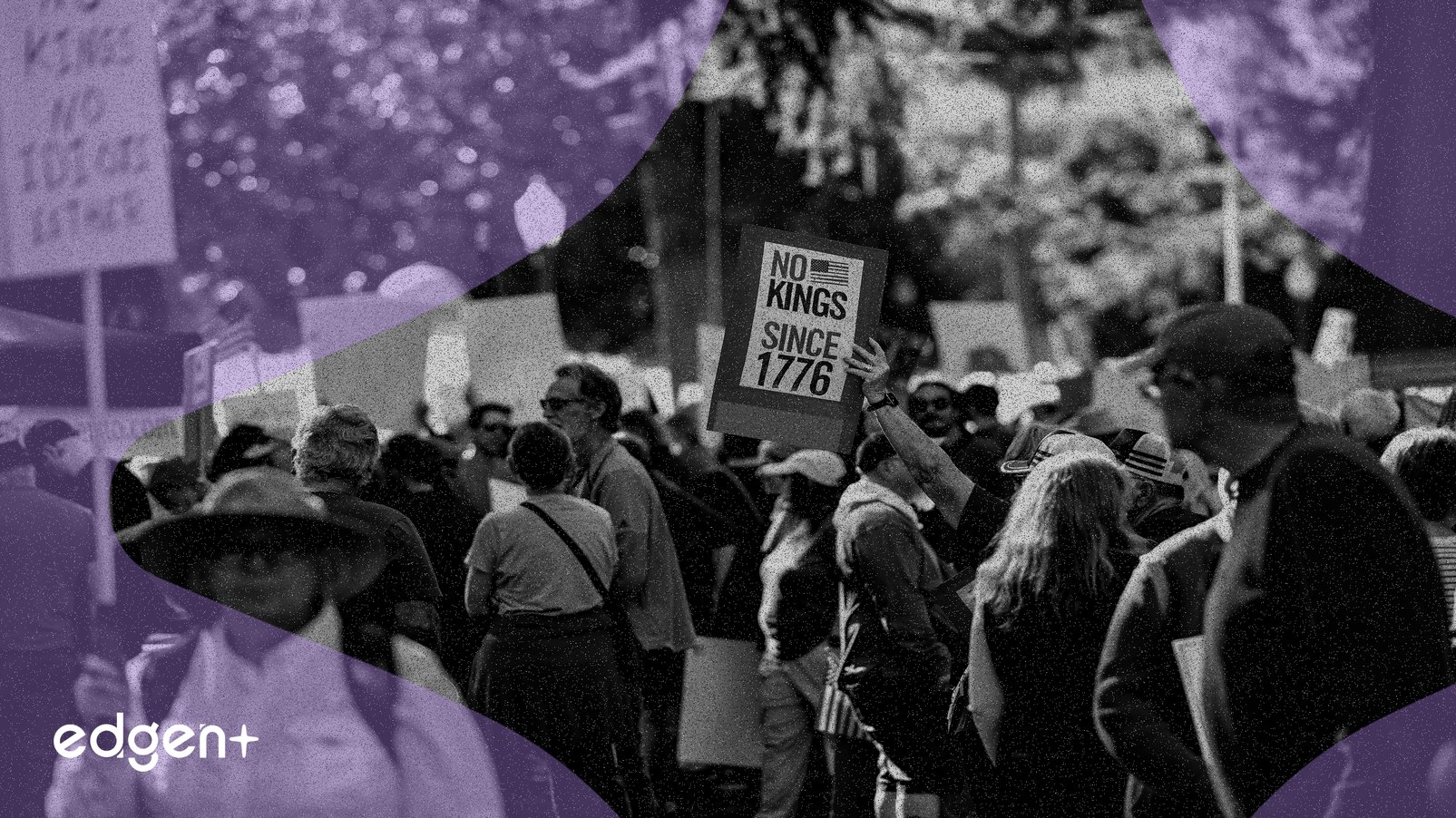Products
Trading Strategies
Markets
Ask AI About SHIB

No Data Yet

## Executive Summary A resurfaced open letter from former **Geth** lead developer Péter Szilágyi criticizing the **Ethereum Foundation** for alleged centralization and inadequate compensation has prompted significant community debate and coincided with a 2.75% decline in **ETH** price. ## The Event in Detail Péter Szilágyi, former lead developer of **Geth** (Go Ethereum) from 2015 to 2025, publicly shared a letter he wrote to the **Ethereum Foundation** on May 22, 2024. In this document, Szilágyi articulated deep dissatisfaction with the Foundation's governance, compensation structure, and overall direction. He claimed to have felt like a "useful fool" for the **Ethereum Foundation**, suggesting his role was publicly presented as key to open values while his input was internally dismissed. Szilágyi specifically cited his total earnings of $625,000 over six years, during a period when **Ethereum's** market capitalization grew to hundreds of billions of dollars, as proof of significant pay inequality and a system that exploited idealistic employees. Szilágyi further criticized the Foundation's power structure, alleging a "small ruling elite" of 5-10 individuals around **Vitalik Buterin** holds indirect but absolute influence over the **Ethereum** ecosystem. He stated, > "Whether he wants to or not, he is – and has always been – directly defining what becomes successful in Ethereum and what doesn't……Ethereum may be decentralised, but Vitalik absolutely has complete indirect control over it." This concentration of power, according to Szilágyi, contradicts **Ethereum's** foundational principles of open participation and equality. He also accused the Foundation of concealing internal pay data and systematically underpaying those who built and maintained the network's core infrastructure. ## Market Implications The resurfaced criticisms have triggered a significant internal debate within the **Ethereum** community and prompted public commentary from influential figures. **Polygon** co-founder **Sandeep Nailwal** publicly echoed Szilágyi's sentiments, questioning his loyalty to **Ethereum**. Nailwal stated that **Polygon** had received no direct support from the **Ethereum Foundation** or the **Ethereum** community, despite building infrastructure that scaled the network. He estimated that this lack of support and adherence to **Ethereum's** ecosystem might have cost **Polygon** "billions of dollars in valuation," suggesting that if **Polygon** were to brand itself as a standalone Layer-1 network, its valuation could be "two to five times higher." He cited **Hedera Hashgraph**, an L1, being valued higher than **Polygon**, **Arbitrum**, **Optimism**, and **Scroll** combined as an example. DeFi architect **Andre Cronje** also criticized the **Ethereum Foundation**, alleging it provided zero support and funding to core builders while raising questions about the allocation of its significant financial resources. These disputes directly challenge **Ethereum's** core value proposition of decentralization, raising concerns about potential ecosystem fragmentation and eroding confidence among key stakeholders. Coinciding with these internal tensions, **ETH's** price fell to $3,871.2, marking a 2.75% decline in 24 hours and underperforming **Bitcoin**. Furthermore, **Ethereum** ETFs recorded a combined net outflow of $284 million, indicating a decline in institutional interest. While U.S. **Bitcoin** ETFs saw a larger net outflow of $449.5 million, **Ethereum's** lower 24-hour turnover ratio of 0.08, compared to **Bitcoin's** 0.15, signals weaker liquidity and potentially higher vulnerability to downward price swings. ## Expert Commentary **Sandeep Nailwal's** comments underscore a sentiment that external projects contributing significantly to the **Ethereum** ecosystem feel undervalued and unsupported. He reflected on his "moral loyalty" towards **Ethereum** despite the perceived financial costs. **Andre Cronje's** remarks add to the narrative of a Foundation detached from the practical needs of core developers, questioning the transparency and effectiveness of its financial management. **Vitalik Buterin** responded to Nailwal by acknowledging **Polygon's** contributions and praising his charity efforts, but notably did not address the core issues of compensation, funding transparency, or the alleged centralized decision-making structure. Szilágyi's initial letter, now public, serves as a direct critique of the Foundation's organizational culture, citing instances of suppressed dissent and a lack of merit-based progression. ## Broader Context The ongoing discussion reflects broader concerns regarding the **Ethereum Foundation's** role and perceived centralization within the **Ethereum** ecosystem. Critics suggest the Foundation exhibits characteristics of "big company disease" and question the authenticity of its decentralization claims. While **Ethereum** aims for a decentralized network, the Foundation's actions and structure are often scrutinized for exhibiting centralized control. This debate could lead to crucial internal reforms within the **Ethereum Foundation**, pushing for greater transparency and equitable resource distribution, or, if left unaddressed, it risks accelerating a "brain drain" of core talent and projects to competing Layer 1 and Layer 2 solutions. The periodic sales of **ETH** by the Foundation, such as the 4,466 **ETH** sold in 2024 for $12.61 million, also draw scrutiny, with some community members attributing these sell-offs to price declines and questioning the Foundation's financial stewardship amidst calls for greater accountability.

## Executive Summary Ethereum co-founder Vitalik Buterin lauded Polygon and co-founder Sandeep Nailwal for their significant contributions to the Ethereum ecosystem, specifically highlighting advancements in zero-knowledge Ethereum Virtual Machine (ZK-EVM) development and their impact on application hosting and philanthropic endeavors. This commendation underscores Polygon's strategic positioning within the broader Web3 landscape, reinforcing bullish sentiment for Polygon and the continued evolution of zero-knowledge technologies for blockchain scalability. ## The Event in Detail Vitalik Buterin expressed admiration for Sandeep Nailwal's personal contributions and Polygon's value to the Ethereum ecosystem. Buterin specifically recognized Polygon's early investment in ZK-EVM proofs, including the integration of Jordi Baylina's team, which significantly advanced the field. Polygon's role in hosting successful applications requiring high scalability, such as **Polymarket**, was also highlighted. Furthermore, Buterin acknowledged Polygon's development of infrastructure for proof aggregation, known as **AggLayer**, among other technological contributions. Beyond technical achievements, Buterin commended Sandeep Nailwal's philanthropic work, particularly through the **Crypto Relief** project for Indian biomedical research during the pandemic. Buterin noted Nailwal's initiative to return a **$190 million SHIB** token donation, which subsequently provided crucial funding for the **Balvi** open-source biotechnology project focused on airborne diseases. Buterin also noted the significant progress in zero-knowledge technology, citing that transaction proof costs have been reduced to approximately **$0.0001**. He suggested that Polygon consider integrating existing mature ZK technologies to enhance the security of its Proof-of-Stake (PoS) chain, an encouragement that aligns with Polygon's strategic roadmap. ## Market Implications Polygon's strategic direction and technical advancements, reinforced by Buterin's endorsement, have several implications for the market. The proposed upgrade of the existing **Polygon PoS** chain to a **zkEVM Validium** represents a significant technical undertaking. This would transform Polygon PoS into a decentralized Layer-2 (L2) solution secured by zero-knowledge proofs, aiming for enhanced security, performance, and integration into the broader Polygon 2.0 ecosystem. A Validium offers a lower-cost, higher-throughput alternative to a rollup, maintaining similar security guarantees through ZK proofs while processing transaction data off-chain. This move is significant given the Polygon PoS chain's current scale, with over **$2 billion** in on-chain assets and an average of **2.5 million** daily transactions. Polygon's leadership in ZK technology is evident through its release of a fast ZK proving system and the launch of an EVM-equivalent zkEVM on mainnet. The **Polygon 2.0** vision aims for every Polygon chain to be a ZK L2, interconnected through the **AggLayer**, which is designed to unify liquidity and users across the ecosystem. This strategy positions Polygon to address critical scalability and interoperability challenges within Web3. Recent performance data from Q3 2025 indicates robust growth across the Polygon ecosystem. The **Bhilai** hard fork achieved **1,000 transactions per second (TPS)** with near-zero gas fees, while the **Heimdall v2** upgrade reduced block finality to approximately **5 seconds**, moving the network towards **5,000+ TPS**. Average daily active addresses on Polygon PoS increased to **600,000** (+10% Quarter-over-Quarter), and daily transactions reached **3.8 million** (+12.0% Quarter-over-Quarter). Decentralized Finance (DeFi) activity also rebounded, with total value locked (TVL) rising 10% Quarter-over-Quarter to **$1.18 billion**. The stablecoin supply on Polygon PoS grew 23.3% Quarter-over-Quarter to **$2.98 billion**, positioning Polygon as a significant player in the stablecoin market. NFT trading activity rose 68.2% Quarter-over-Quarter. ## Expert Commentary Vitalik Buterin's public statements serve as a significant form of expert commentary within the Ethereum and broader blockchain space. His emphasis on Polygon's early and sustained commitment to ZK-EVM technology, alongside its efforts in building crucial infrastructure like AggLayer, highlights the strategic importance of these developments for Ethereum's scaling roadmap. Buterin's specific suggestion for Polygon to incorporate mature ZK technology for its PoS chain security underscores a future direction where ZK proofs are integral to the reliability and efficiency of large-scale blockchain networks. ## Broader Context The push towards advanced ZK technologies, as championed by Polygon and acknowledged by Buterin, is a defining trend in the evolution of blockchain infrastructure. The **Polygon 2.0** vision, which includes the integration of ZK proofs across all Polygon chains and the unifying **AggLayer**, reflects a broader industry movement towards modular and interconnected blockchain ecosystems. Projects like **ZKsync** further exemplify this trend, targeting over **10,000 TPS** and transaction fees as low as **$0.0001** by 2025. These advancements are critical for enhancing the scalability, security, and user experience of decentralized applications, potentially driving increased corporate adoption of Web3 technologies. The continued development and adoption of ZK solutions are expected to strengthen the overall Ethereum ecosystem's scalability vision, enabling a more robust and efficient environment for future innovation.

## The Event in Detail **Bitcoin (BTC)** extended its 2025 bull market to fresh highs above **$125,000** over the weekend, demonstrating a year-to-date gain exceeding **32%**. This surge coincided with a significant downturn across major memecoins. **Dogecoin (DOGE)** experienced a 20% decline, **Shiba Inu (SHIB)** fell by 41.41%, and **PEPE** saw a 48.55% reduction. **TRUMP** memecoin notably dropped over 83% from its previous highs, reflecting a marked divergence in performance within the cryptocurrency market. ## Market Implications The underperformance of memecoins signals a pronounced shift in retail investor sentiment and capital allocation. Data from **Dune Analytics** indicates a sharp decrease in new memecoin mints on **Solana** by over **75%** since July 2025, with daily mints plunging from nearly 400 to below 100 by late August. This decline suggests fading retail interest in highly speculative assets. Simultaneously, retail attention appears to be gravitating towards prediction markets. Between September 21 and September 28, **Solana** memecoins recorded **$864.8 million** in volume, while prediction platforms such as **Polymarket** and **Kalshi** collectively handled **$1.54 billion**, representing nearly **1.8 times** greater volume. This shift underscores the growing appeal of competing speculation venues and institutional narratives over the memecoin sector. ## Expert Commentary Technical analysis suggests potential for a rebound in some memecoins. For **Dogecoin**, analysts note its stabilization above key support levels near **$0.24** after weeks of consolidation. Crypto analyst Trader Tardigrade identified a "cup and handle" pattern on the 4-hour chart for **DOGE**, suggesting a potential corrective move towards **$0.30**. A bullish **MACD** crossover on the monthly chart, akin to one observed in early 2024 that preceded a significant recovery, is also cited as an indicator of potential upward momentum. Projections based on these technical structures suggest **DOGE** could target the **$0.50–$0.60** range in the coming months, or even **$0.80** by year-end, contingent on broader market conditions and increased utility. ## Broader Context Bitcoin's rally is underpinned by persistent institutional demand and structural market forces. During Q2 2025, corporate treasuries acquired approximately **131,000 BTC**, surpassing the **111,000 BTC** accumulated by Exchange-Traded Funds (ETFs). A total of 61 publicly listed companies have adopted Bitcoin treasury strategies, with their collective holdings expanding by **18%** in Q2 2025 alone. Companies like **MicroStrategy** lead this trend, holding over **638,460 BTC** at an average price of **$73,880** per coin. This institutional accumulation, alongside a severe exchange supply shortage, has been a key driver in **Bitcoin** reaching **$125,689**. This contrasts sharply with the waning speculative interest in memecoins, indicating a maturation of the digital asset market where capital is increasingly flowing into assets perceived to have stronger institutional backing and utility over highly speculative, narrative-driven tokens. The shift in retail and institutional capital suggests a recalibration of investor priorities within the broader Web3 ecosystem, emphasizing foundational assets and regulated markets.

## Executive Summary The cryptocurrency market has experienced significant shifts driven by converging regulatory, developmental, and speculative forces. The new US administration has signaled a definitive pro-crypto stance through executive actions and key appointments, aiming to establish regulatory clarity and encourage innovation. Concurrently, the **Ethereum** ecosystem is navigating substantial internal divisions and strategic debates, leading to market underperformance relative to its peers. Meanwhile, the **Solana** network witnessed an extraordinary surge in activity, largely fueled by memecoin launches, which tested its infrastructure while demonstrating its capacity for high transaction volumes. ## The Event in Detail: US Regulatory Shift President **Donald J. Trump** signed an executive order titled "Strengthening American Leadership in Digital Financial Technology," which promotes self-custody, mining, and uncensored transactions. This order explicitly revokes the previous administration's crypto executive order and prohibits federal agencies from undertaking actions to establish central bank digital currencies (CBDCs). A **Presidential Working Group on Digital Asset Markets** has been established to develop a federal regulatory framework for digital assets, including stablecoins, and to evaluate a strategic national digital assets stockpile. Key pro-crypto appointments reflect this policy shift. **Caroline Pham** was named Acting Chair of the **CFTC**, **Travis Hill** as Acting Chair of the **FDIC**, and **Mark Uyeda** as Acting Chairman of the **SEC**. Notably, **Hester Peirce** is leading a new **SEC** crypto task force aimed at creating a "sensible regulatory path." Further solidifying this new direction, the **SEC** rescinded Staff Accounting Bulletin (SAB) No. 121. This rule previously required institutions to record client crypto assets as liabilities, creating operational and financial hurdles for banks offering custody services. Its rescission removes a significant barrier, paving the way for greater financial integration of cryptocurrencies by major banking institutions. This policy reversal is expected to accelerate institutional engagement in the digital asset sector, fostering a more robust and regulated market environment. ## The Event in Detail: Ethereum's Internal Divisions The **Ethereum** community is facing an "existential crisis," as highlighted by the "Mirror" report commissioned by the **Ethereum Foundation** from research group WE3. The report, based on over 60 interviews, identified eight distinct factions within the community and a lack of consensus on **Ethereum**'s core identity and long-term vision. This internal strife is seen as a critical challenge to the protocol's future evolution and competitive standing. Governance concerns have emerged, with discussions around potential conflicts of interest among insiders influencing protocol development. The **Ethereum Foundation** itself has undertaken structural changes, including committing **50,000 ETH**, approximately **$165 million**, to DeFi protocols to replenish its treasury, which had reportedly shrunk by **39%** over the past three years. These efforts aim to address internal struggles and policy adjustments. Despite these efforts, **ETH** has consistently underperformed against **BTC** and **SOL** for approximately three years. The report also points to a "layer 2 conundrum," where the proliferation of **Layer 2 (L2)** solutions captures the value of block space, potentially contributing to "negative momentum" in the **ETH** price. Recent leadership changes saw **Hsiao-Wei Wang** and **Tomasz Stańczak** appointed as co-executive directors, with **Aya Miyaguchi** transitioning to president, in an attempt to enhance technical expertise and community engagement. ## The Event in Detail: Solana's Memecoin Surge The **Solana** network experienced unprecedented activity, largely driven by the launch of **$TRUMP** and **$MELANIA** memecoins by the **Trump** family. The **$TRUMP** memecoin surged from under **$10** to a peak of **$74.59**. The subsequent launch of the **$MELANIA** token triggered a sharp reaction, causing **$TRUMP** to plummet by **50%** at its lowest point, shedding **$5 billion** in market capitalization within 40 minutes. This memecoin activity propelled **Solana** to record-breaking decentralized exchange (DEX) volumes, reaching **$28.2 billion** and **$39.2 billion** on January 19th and 20th, respectively. This peak day exceeded the previous all-time daily high across all blockchains combined, with over **10%** of **Solana**'s all-time cumulative volume occurring within the seven days surrounding the **$TRUMP** launch. By September 2025, **Solana**'s DEXs recorded **$1.21 trillion** in cumulative volume, outpacing **Ethereum** (**$400 billion**) and **BNB** (**$761 billion**) combined, achieving over **50%** DEX market share. The surge, while demonstrating **Solana**'s high transaction processing capacity (65,000 TPS) and sub-penny fees, also stressed the network. The **Jito** block engine API experienced degraded performance for over three hours, median priority fees jumped **5000x**, non-vote transaction count fell **66%**, and compute units per block fell **50%**. ## Market Implications The shift in U.S. regulatory policy under the new administration is poised to significantly accelerate institutional capital flow and innovation within the country's digital asset sector. The rescission of **SAB 121** explicitly removes a key financial impediment for traditional banks, fostering clearer pathways for corporate adoption of crypto-related services. This move positions the U.S. to potentially attract substantial investment and development in **Web3** technologies, offering a more predictable operating environment compared to previous enforcement-heavy approaches. Conversely, the internal debates and underperformance within the **Ethereum** ecosystem introduce considerable uncertainty for its future market positioning and investor sentiment. While leadership aims to balance scalability and decentralization, the "layer 2 conundrum" suggests that **Ethereum**'s core asset, **ETH**, may continue to struggle against competitors like **Solana** without a clear resolution to its economic and governance challenges. Continued underperformance could lead to a further erosion of market share, particularly as other Layer 1s demonstrate superior transaction efficiency and lower costs. **Solana**'s experience with memecoin-driven activity underscores the dual nature of virality in the crypto market. While such events can generate immense network activity and revenue, as evidenced by its record **DEX** volumes and growing institutional interest—public companies now hold **5.9 million SOL** in corporate treasuries—they also expose infrastructure vulnerabilities. The technical strain experienced during the **Trump** memecoin launches highlights the need for robust scaling solutions, even for high-throughput chains. Despite challenges like validator centralization and high user churn, **Solana**'s ability to handle massive speculative volume positions it as a significant competitor in the Layer 1 landscape, appealing to users and institutions prioritizing speed and cost-efficiency. ## Broader Context The divergence in performance and sentiment across these major crypto narratives signals an evolving market structure. Regulatory tailwinds in the U.S. may foster a more mature and integrated financial ecosystem for digital assets, potentially drawing traditional finance deeper into crypto. Simultaneously, the internal struggles of a foundational blockchain like **Ethereum** and the spectacular, yet volatile, rise of memecoin activity on platforms like **Solana** illustrate the complex interplay of technological development, community governance, and speculative retail interest that continues to define the broader **Web3** landscape.
Shibwifhatcoin (SHIB) current price is $0.000491, down 4.54% today.
Shibwifhatcoin (SHIB) daily trading volume is $3.8K
Shibwifhatcoin (SHIB) current market cap is $491.0K
Shibwifhatcoin (SHIB) current circulating supply is 993.6M
Shibwifhatcoin (SHIB) fully diluted market cap (FDV) is $491.0K